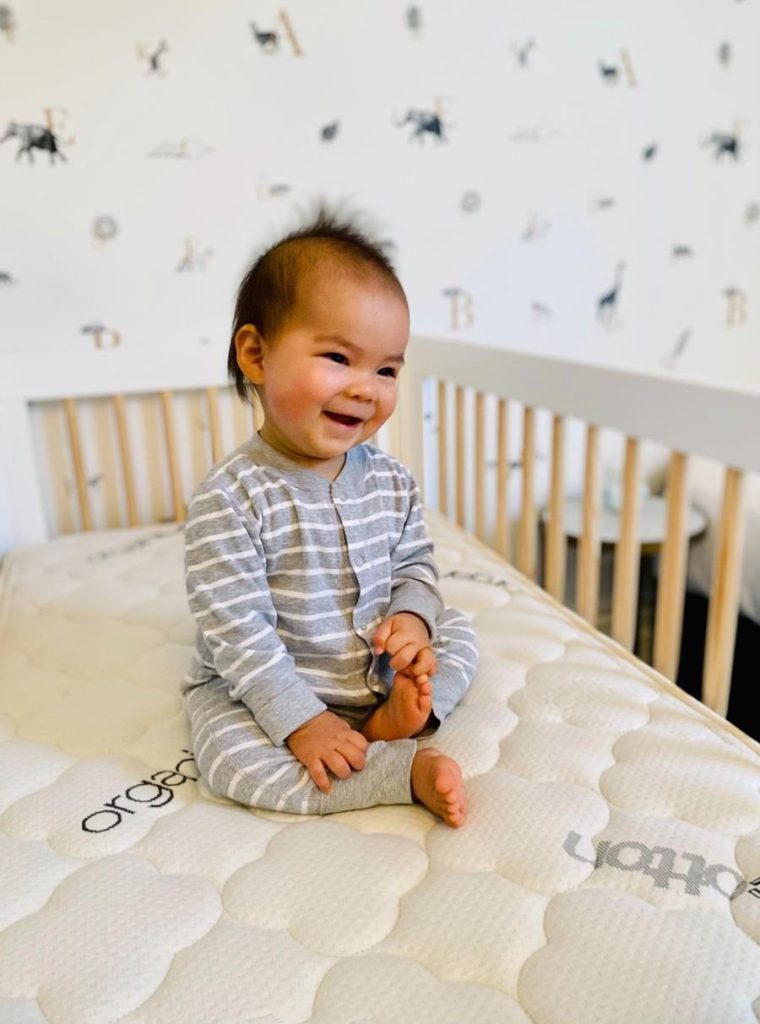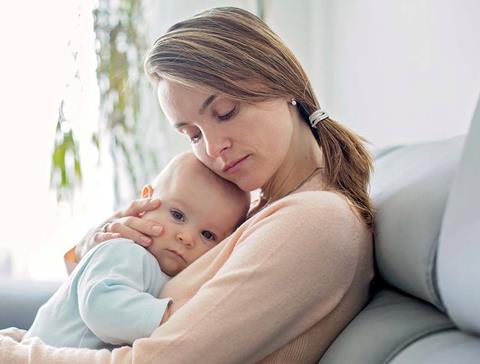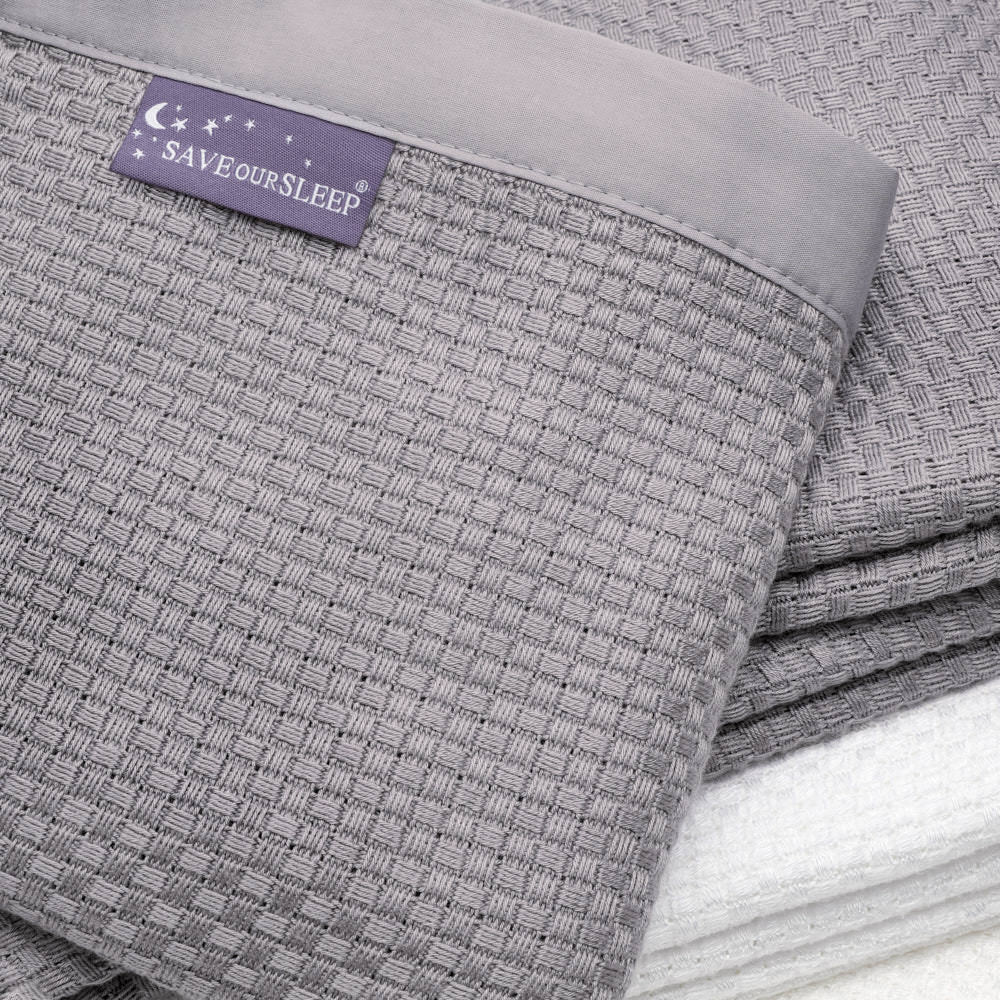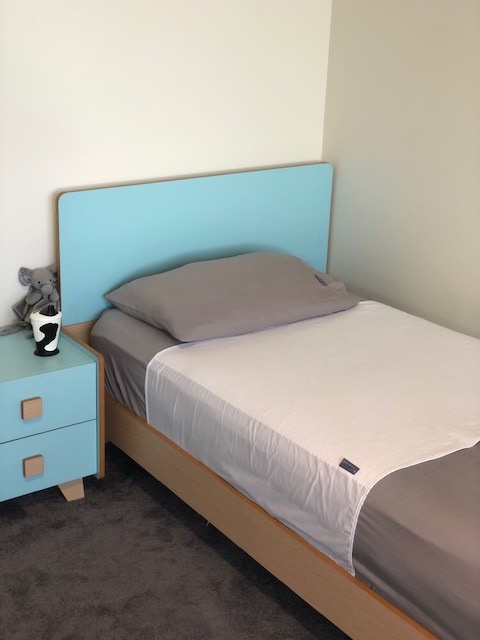Moving your toddler from a cot to a bed should be a carefully planned step, and you need to understand that it may take longer for her to adjust to sleeping in a big bed than you think. We will look at the things that will help your toddler transition easily to a big bed and how to solve common problems I have come across during this stage of toddlerhood.
You will need to allow a few weeks for the whole transition process. Some children are so ready for this step that it will only take a day or two, but other children take weeks. The good news is that they all get there in the end.

WHAT AGE TO MOVE
Girls are often ready for a big bed at two and a half years but boys are often not ready for this step until they are closer to three. I believe this is because girls are often a little more secure in their understanding of boundaries and boundaries need to be firmly in place for this transition to go smoothly.
PREPARATION
The transition to a big bed will go more easily if you involve your toddler in the whole process. If she likes shopping you could try taking her to the shops with you to choose the bedding she wants.
If your toddler hates shopping then do not drag her to the shops – you can always purchase the bedding online – but you could involve her by showing her the bedding you have chosen and ask her if she would like to pick a cushion to go with it.
Even if you do not involve your toddler in purchasing the bedding you can get her to help open the new sheets or duvet cover, wash them and put them on the bed. By making the whole process as much fun as possible you will make the task easier.

WHERE TO PUT THE NEW BED
Where you put the new bed will depend on your toddler and situation. There are a number of approaches I have used during house visits over the years.
Moving a child from a cot to a bed in the same room
Once the bed is set up, you need to make sure it is a safe and secure place for her to be. Your child’s bedroom should already be as child-safe as possible, but once she has the freedom of being in a bed this is particularly important. Fix window locks, cover up unused electricity sockets, make sure bookshelves are secured to the wall and there is nothing breakable or sharp within reach. Imagine all the trouble she could get into and guard against it. When you go to bed make sure all doors and stair gates are shut except the door to your own room so she can come to your room if she wakes.
To make your toddler feel secure, sit on the bed with her at different moments during the day and read stories. When she is comfortable with the new bed as a place to sit and hang out, suggest she have her daytime sleep in it. Point out that she is a big girl now and this means that she should sleep in a big bed like Mummy, Daddy and any older siblings she might have.

If she is not ready on the first day then try gentle persuasion but if that meets strong resistance let her sleep in her cot and try again the next day. Make her bed a fun place to be, not somewhere for punishment or scary stories. Once she has had a good daytime sleep in the new bed, allow her to start having her night-time sleeps in it as well.
I suggest the cot stays in your toddler’s room and is available for her to use for at least eight weeks after she starts to sleep in the bed at night. In my experience most children are happy in the new big bed for six weeks and then they decide to test the boundaries. You will need the cot available to get over this hurdle.

When your toddler decides she is ready to sleep in the big bed in the night as well as the day, explain to her she can try to sleep in the big bed but she only has one chance. Explain if she gets out of bed you will be putting her in the cot. Tell her if she gets out of bed at sleep time, day or night, you will see this as her asking you to put her in the cot. Then, if she gets out of bed you need to follow through with this warning and pop her in the cot for the rest of her sleep. Tell her it is her choice if she wants to be a big girl or a baby.
If your toddler is at the point where she can get out of the cot, still use this approach but leave the side of the cot down to avoid a fall. It is also a good idea to make sure she has a soft landing by placing a mattress on the floor.
In the beginning, you may find your toddler starts out feeling all big and brave in her big bed but then is not able to get to sleep. If this happens, move her back into her cot and leave her there for the whole sleep. Do not be fooled into a game of moving beds all day or night. She might not like being put back in her cot but she will learn very quickly that if she wants to be a ‘big girl’ she has just one chance at each sleep.

When you move your toddler to a big bed use the same routine as you always have. If she gets out of her bed, as soon as you catch her getting out say: ‘No, it’s sleep time’, in a firm, meaningful manner. Turn her around and walk her back to her room without further conversation and pop her in the cot. If she gets out of the cot you could try using a stair gate across the door. I would not shut the gate straightaway but tell her if she comes out of her room you will shut it. Always remember that if you say something, then you should carry through with what you have said.
Moving a toddler to a new bed in a new room
If you want your child to move to a new room as well as into a bed for the first time, then first set up the new bed in the new room. Then after one week make a big game of moving all her toys and belongings to the new room. Then move her cot into the new room and let her sleep in the cot for the first few weeks in the new room. When you move her cot into the new room, move it in the morning so that your toddler’s first sleep in the new room is a daytime one. Wait a few weeks until you are sure she is comfortable in her new room and then follow my advice on pages 261–262 for moving a toddler from a cot to bed.

A new baby in the house
If there is a new baby in the house or one on the way, it is best not to move your toddler to a bed to free up the cot for the new arrival. Remember, you can sleep your new baby in a Moses basket, bassinette or a travel cot at first. This way you can continue to use the cot for your toddler to help you and her make it past the important first eight weeks in a big bed.
If you feel you have no choice but to move your toddler, then make her feel she is involved in this decision. Make up the new bed and show it to her. Reinforce the message that she is grown up now and that she might like to sleep in a big bed like Mummy and Daddy. Once she has made the choice to sleep in her new bed, you could then ask her: ‘What will we do with the cot?’
Make it look as though it is her idea to put the baby in the cot. I suggest that in this situation you set up a portable cot in your toddler’s room so if she gets out of the bed you can pop her into the portable cot.
WHY NOT A TODDLER BED?
As discussed earlier in this chapter, your toddler needs to be gradually introduced to sleeping in a normal bed. Taking the sides off her cot suddenly can cause your toddler to feel insecure. You might find she sleeps in the cot-bed for a few nights but then starts to cry or get out. Or you might find she is happy in the cot-bed for six weeks and then decides to test the boundaries and gets out.
It is not possible to follow my advice for transitioning from a cot to a bed if you have taken the sides off the cot. You would be putting the sides on and off the cot too many times to make it practical.

BEDDING
While transitioning your toddler from her cot to her big bed it is best to use the same bedding as you are using in the cot. Yes, it is a good idea to get new bedding as discussed on pages 260–261, but in the first few weeks you should only use it to dress the bed during the day and remove it at sleep times. But if your toddler insists on using the new bedding you can keep it on at sleep times.
You can introduce a pillow at this stage but most toddlers are happy to sleep without one until they are four or five years old. Again, you can use the pillow to dress the bed but remove it at sleep times. Stay away from feather pillows: they are too soft, can set off allergies, and can smother a child if her head sinks into it while she is sleeping. Although pillows are often sold with cot bedding sets, they are not recommended for children under two. Babies and toddlers can easily suffocate while using a pillow.

SLEEPING WITHOUT A SAFE SLEEPING BAG
The good news is there is no need to rush your little one out of a safe sleeping bag. Most toddlers feel safe, secure, warm and cosy sleeping in one. Some children still sleep in a safe sleeping bag at six or seven years of age. As with most things the best time to stop using a safe sleeping bag is when a toddler shows an interest in sleeping without it.
I would wait at least six months after the transition from the cot to a bed before attempting to remove the safe sleeping bag. If, after six months, your little one shows an interest in sleeping without her safe sleeping bag you should explain to her that she has one chance to sleep without it. Explain very clearly that she can try to go to bed without it but if she does not settle within a reasonable amount of time you will be putting it back on her. Remember, you will need to follow through with this warning if she does not settle.
Please remember that without the safe sleeping bag your toddler will need to be dressed a little more warmly for bed.

 |
| • Do not convert a cot to a bed by taking the sides off the cot. I have always found this to unsettle toddlers. • If your toddler sleeps in a safe sleeping bag, you should not stop using it until she has slept in her new bed for at least six months. • Get your toddler to help you choose her sheets and bed covers. • It is always a good idea to have one side of the bed pushed up against a wall. I recommend the use of a bed rail on the other side at first. • Bed heads are also a good idea. Alternatively, have the head also sitting flush with a wall. • Before asking your toddler to sleep in her new bed, sit and read with her or play a game on the bed during the day. Make her new bed a fun place to be. |
Read more – Find out Why Tizzie says NO to waterproof mattress protector
For more information you should consider the Toddler Book

Shop Dreamwee Waterproof Bed linen
